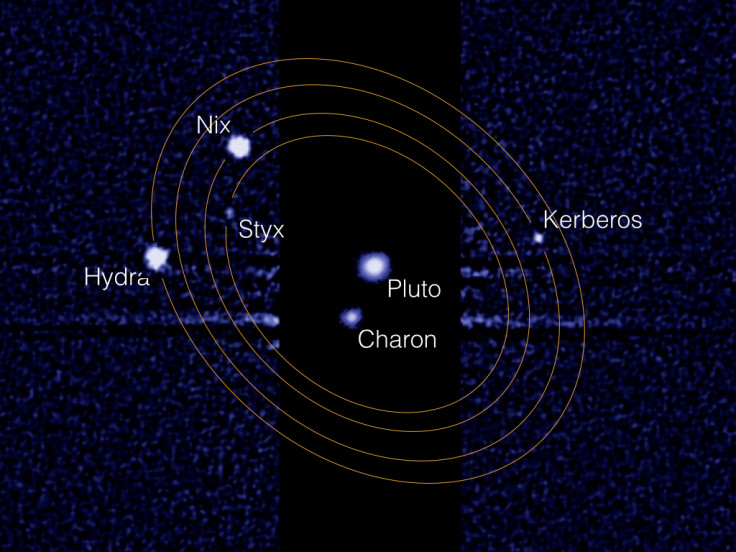Weird interactions between Pluto's moons show they behave like 'unruly teenagers'

Strange interactions between Pluto and its five moons have been unveiled for the first time, helping scientists better understand how it and other small planet and satellite systems form.
Pluto has four small moons – Styx, Nix, Kerberos and Hydra – that orbit around the central "binary" system of the dwarf planet and its largest moon Charon.
Scientists have now analysed images from the Hubble Space Telescope to work out their orbital configurations. Published in the journal Nature, the findings suggest that Nix and Hydra have strange and unpredictable rotations.
Styx, Nix and Hydra all have their orbits locked together, but they can be thrown off by interactions with other bodies, the team from the University of Maryland found.
Study co-author Douglas Hamilton said: "Like good children, our moon and most others keep one face focused attentively on their parent planet. What we've learned is that Pluto's moons are more like ornery teenagers who refuse to follow the rules."
Currently, Nasa's New Horizons probe is on its way to Pluto and is due to perform a flyby of the planet in the middle of July. All of Pluto's smaller moons were discovered in the last 10 years and scientists are keen to find out more about them and their formation.
The Nature study showed that the shifting and imbalanced field created by Pluto and Charon sends the moons off in unpredictable paths. This is amplified as a result of the shape of the moons – they are football shaped rather than rounded spheres.

Despite the apparently random motions, the moons were found to follow a predictable pattern. Nix, Styx and Hydra are all locked together.
Hamilton said: "The resonant relationship between Nix, Styx and Hydra makes their orbits more regular and predictable, which prevents them from crashing into one another. This is one reason why tiny Pluto is able to have so many moons."
Another key finding was that Nix, Hydra and Styx have bright surfaces like Charon, but Kerberos was fart darker – similar to charcoal. Astronomers had predicted the dust created by meteor impacts would have made the moons uniform in appearance, raising questions about how the satellite system formed.
Experts hope the New Horizons mission will help solve the mystery of Kerberos' dark surface, as well as refining our understanding of the rotational and orbital patterns.
"We are learning that chaos may be a common trait of binary systems," Hamilton said. "It might even have consequences for life on planets orbiting binary stars."
In an accompanying News & Views article by Scott Kenyon, from the Smithsonian Astrophysical Observatory, he notes that it is believed the Pluto-Charon system formed through a giant collision between the two proto objects. Pre-existing moons could have survived and new moons could have formed from particles in the debris.
However, other questions about the system is unclear – something which New Horizons will hopefully lay rest to: "These much anticipated observations will lead to improved theories of the formation and evolution of planets and their satellites," Kenyon wrote.
"Linking all these results to ongoing observations of the growing population of known exoplanets will extend tiny Pluto's reach far beyond the Solar System."
© Copyright IBTimes 2025. All rights reserved.






















